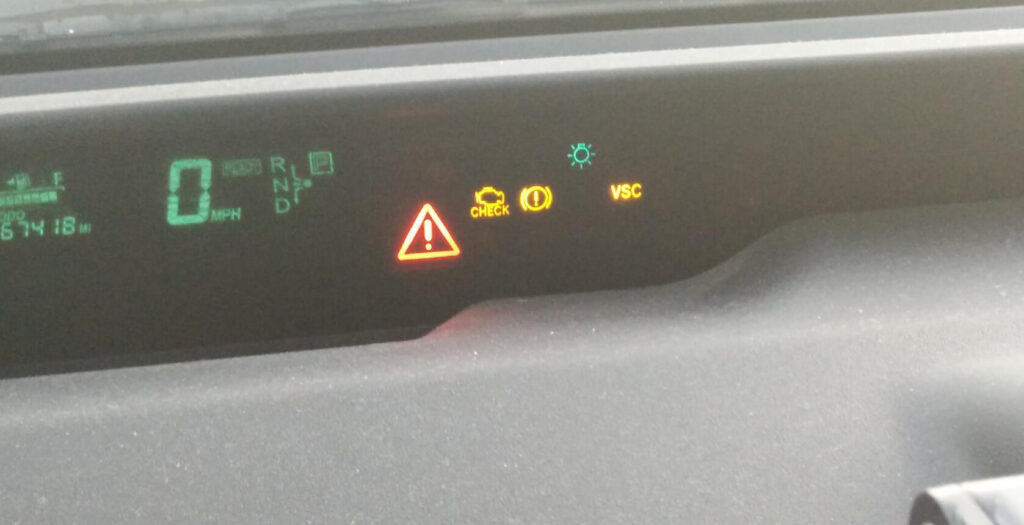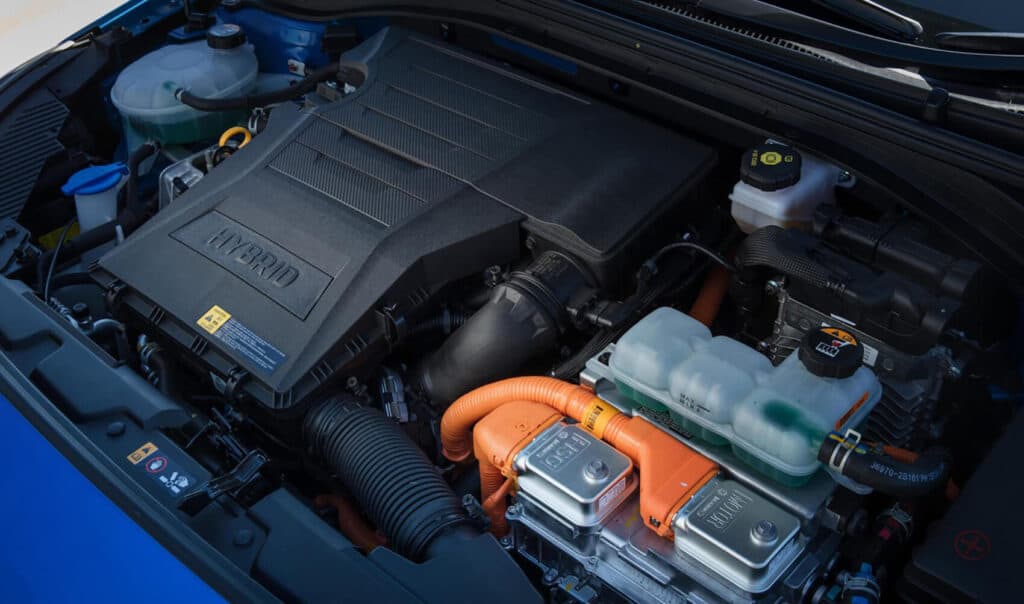Introduction: Cruising Through the Hybrid Highway: Navigating Battery and Charging Warning Lights
Have you ever felt the shiver that runs down your spine when a warning light flickers on your hybrid vehicle’s dashboard? Fasten your seat belts as we navigate the complex highways and byways of hybrid vehicle batteries and charging systems. From understanding the enigmatic warning lights to taking preventive action, consider this your ultimate road map to empowerment.
The Red Light District: What Does the Battery Charging Warning Light Mean?
You’re cruising down the road, enjoying a podcast or perhaps singing along to your favorite tune, and then it happens—a red light flickers on your dashboard. It’s not the warm, inviting glow of a fireplace; it’s a harbinger of potential problems with your battery or charging system. Now, before you brush it off, remember that this light is basically the “911” of your vehicle, telling you that you need to take immediate action. The causes could range from a small hiccup like a loose battery connection that you can fix with minimal hassle to something more serious like a failing alternator, which would need professional intervention.
Don’t let this red beacon go unheeded. Sure, it’s tempting to hope it’ll just turn off on its own (spoiler alert: it probably won’t). Ignoring it is not just asking for trouble; it’s dialing trouble’s number, inviting it over for dinner, and then being shocked when it kicks down your door. Picture this scenario: you overlook the light, and a week later you’re waiting for a tow truck in the pouring rain. An ounce of prevention is worth a pound of tow-truck cure. So whether you’re a DIY enthusiast or a complete novice, take that red light as a signal to either roll up your sleeves or roll into your nearest service station.

The Twilight Zone: Signs of a Dying Hybrid Battery
First, let’s set the stage—you’ve noticed something’s off. Your hybrid isn’t purring like it used to; it’s more like it’s gasping for air. Sure, every car experiences the occasional hiccup, but these are not those. These are tell-tale signs that your hybrid battery may be on its way out. Fuel efficiency starts to wane, the acceleration feels sluggish, and even the cabin lights might dim more than usual. It’s like your car is haunted, operating in a zone that’s both familiar and unsettlingly strange.
Your dashboard might even join in this horror show, lighting up with warning signals faster than a disco ball. ‘Check engine’ lights and hybrid-specific warnings aren’t just there for ambiance; they’re your car’s desperate attempt to get your attention. If you ignore these symptoms, you’re not just tempting fate; you’re practically daring it to do its worst. Think about it: a sudden battery failure could happen while you’re miles away from the nearest service station, turning what could have been a minor inconvenience into a full-blown crisis. So when your hybrid starts sending you these red flags, don’t procrastinate. It’s your cue to either consult your vehicle’s manual, seek advice from fellow hybrid drivers, or better yet, get professional help to diagnose and resolve the issue before it morphs into a wallet-draining catastrophe.
Green Lights and Pit Stops: How to Fix a Battery Charge Warning Light
Imagine driving while being followed by a pesky gnat that won’t go away. That’s how it feels to drive with a battery charge warning light glaring at you. So, how do you send this gnat packing? The first step is acknowledging its presence; the warning light is not to be ignored. You could be looking at minor issues like loose battery connections or more significant problems like a faulty alternator.
Actionable Steps
• Check the Battery Terminals: Sometimes the solution is as simple as tightening loose battery connections or cleaning corroded terminals. A little elbow grease can go a long way.
• Inspect the Alternator: The alternator is often the star of the show when it comes to charging your battery. If it’s not functioning correctly, your battery won’t either. Consider doing a simple voltage test using a voltmeter.
• Look at the Serpentine Belt: If this belt is loose or worn, it could impair the alternator’s ability to charge the battery. Replacing or tightening it might solve your problem.
• Run a Full Diagnostic: Some auto parts stores offer free charging system tests. Take advantage of this to confirm the exact issue affecting your battery or charging system.
• Consult a Mechanic: If DIY troubleshooting doesn’t fix the problem, it’s time to bring in the experts. Don’t delay; a simple issue can escalate into a costly repair.
Crossing the Warning Bridge: Understanding Battery Charging Failure
Battery charging failure is akin to hearing the last-minute ticking of a time bomb. When your hybrid vehicle’s system flashes this warning, it’s virtually screaming, “Feed me, or I’m about to conk out!” This could be due to multiple reasons, ranging from a tired battery that’s lived past its useful years to more complex issues like a malfunctioning charging system.
Unpacking the Root Causes
• Aged Battery: Just like humans, batteries age and lose their capacity to hold a charge. A battery that’s 4–6 years old is often on its last legs and is a likely suspect for charging failure.
• Faulty Alternator: If the alternator isn’t working as it should, your battery won’t get the juice it needs. It’s like trying to fill a water tank with a broken pump.
• Charging System Circuit Issues: Sometimes, the problem lies in the connecting circuits. Corroded wires, loose connections, or even blown fuses could be the culprits preventing a proper charge.
• Software Glitches: Modern hybrids have complicated electrical systems that are controlled by software. Occasionally, a simple software glitch can throw your entire charging system out of whack.
• Expert Diagnosis: If you’re not sure what’s causing the issue, the best course of action is to consult a professional for a thorough diagnostic checkup. An ounce of prevention is worth a pound of cure, and early diagnosis could save you from a breakdown or a heavy repair bill.
By understanding the source of the issue, you’re better equipped to cross the ‘warning bridge’ from uncertainty to assured action.
The Diagnostic Odyssey: How to Assess Charging System Problems
• Know Your Tools: Familiarize yourself with essential diagnostic equipment like a voltmeter. A voltmeter is your go-to gadget for checking voltage levels and determining if the charging system is functioning as it should.
• Eye the Alternator: The alternator is a critical component in the charging system. Use the voltmeter to check its output voltage. If it’s not between 13.5 and 14.5 volts when the engine is running, you’ve got an issue to address.
• Inspect the Belts: Don’t underestimate the importance of serpentine or drive belts. A worn or loose belt can reduce the alternator’s efficiency, leading to charging problems. A visual and tactile examination should reveal if it needs tightening or replacement.
• Check Battery Connections: Ensure that the battery terminals are clean and securely connected. Poor connections can cause lower voltage readings and impair the overall charging process.
• Listen for Noise: Sometimes, an audible issue like a screeching noise can point to problems like a loose belt or a failing alternator. Keep your ears peeled for these telltale signs.
• Read the Warning Lights: Always heed your hybrid’s dashboard warnings. If the charging system warning light is on, it’s a direct signal that the system needs immediate attention.
• Seek Professional Help: Not everyone is a DIY master, and that’s okay. If your voltmeter readings are inconsistent or if you’re unsure about the issue, consult a professional. This ensures a thorough diagnosis and can prevent minor issues from escalating into expensive problems.
Armed with these bullet points, you’re better equipped to embark on the odyssey of diagnosing charging system problems in your hybrid vehicle. Just remember, it’s always better to catch an issue before it grows into a full-blown crisis.

Caution or Crisis? Driving with a Hybrid System Warning Light On
Picture your hybrid’s system warning light as a glaring red stop sign on the dashboard. Is it safe to drive with that light on? Frankly, it’s like your vehicle is whispering, “Proceed at your own peril.” It’s not merely a decorative feature; it’s a serious indicator that something is wrong with the car’s complex ecosystem of electrical and mechanical components.
Let’s dissect the risk level a bit. If the light is flashing intermittently, it might be a cautionary tale—perhaps a sensor is acting up, or a minor issue needs attention. But a persistent light? That’s a full-blown crisis calling for immediate intervention. Continuing to drive in this state is akin to tightrope walking without a net. You risk damaging integral systems of the vehicle, from the battery and electric motor to possibly even the combustion engine. And yes, a sudden breakdown is far from the worst-case scenario; safety hazards like fires are not out of the question. So, when that light glows, it’s time to slow… down and seek professional assistance.
Finances and Fixes: The Cost of Mending a Troublesome Battery or Charging System
The phrase “hidden costs” strikes fear into even the most hardened budget warriors among us. So, let’s unveil the mystery: how much will it actually cost you to fix that ominous battery or charging system warning light? The damage to your wallet could range from a manageable $500 to a staggering $6,000.
Here’s the breakdown
• Minor Repairs: Small issues like cable disconnections or faulty sensors could set you back between $500 to $1,000. It’s like stubbing your toe; it hurts but it’s fixable.
• Moderate Fixes: Things like alternator replacement or minor battery issues usually cost between $1,000 and $2,500. Think of this as the automotive equivalent of a sprained ankle—not fun, but recoverable.
• Major Overhauls: Replacing a dead hybrid battery or resolving severe electrical problems? Now you’re looking at $2,500 to $6,000. This is more akin to breaking a leg. Recovery is costly and time-consuming.
• Labor Costs: Don’t forget the technicians’ time. Depending on the complexity of the issue, labor could add another $100 to $500 to your bill.
The point is, ignoring a battery or charging system issue isn’t just risky for your vehicle’s health; it could be a financial time bomb waiting to go off. And believe me, that’s one explosion you’d rather avoid.
Conclusion: Flickering Lights to Full Throttle: Mastering the Hybrid Battery and Charging System
Navigating the complexities of your hybrid battery and charging system doesn’t have to feel like steering through a maze in the dark. You’re now armed with the insights, tips, and cautionary tales to not just survive but thrive in the hybrid highway. For any and all issues you can’t tackle yourself, Uchaincs is the go-to solution in Canada, offering not just exceptional value but also that coveted peace of mind. Book your appointment with Uchaincs now and power up your hybrid’s journey!
